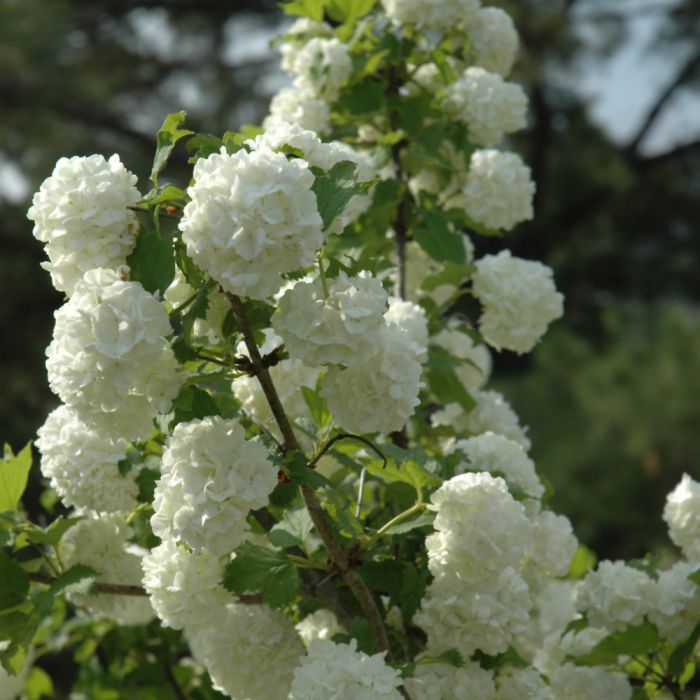Top Ten Heirloom Plants for Minnesota
Karen's Top Ten Heirloom Plants for Minnesota!




Out of stock
Sold out for the seasonA popular shrub with rounded clusters of snowball-shaped flowers in spring; very showy and good fall color; does not produce fruit; upright and spreading, will grow quite large; great as a solitary accent, flowers best in full sun.
Elevate your landscaping with Gertens' unmatched variety of shrubs! Selecting the right shrubs for your backyard can enhance its beauty and functionality. Consider factors like sunlight, soil type, and mature size when choosing shrubs. For sunny areas, flowering shrubs like roses or hydrangeas can add color and charm. In shady spots, opt for shrubs like azaleas or hostas. Evergreen shrubs provide year-round interest and privacy, while deciduous shrubs offer seasonal color changes. At Gertens, we offer a wide selection of shrubs to suit every backyard need.
Height: 12 feet
Spread: 10 feet
Sunlight: ![]()
![]()
Hardiness Zone: 3a
Other Names: European Highbush Cranberry
Description:
A popular shrub with rounded clusters of snowball-shaped flowers in spring; very showy and good fall color; does not produce fruit; upright and spreading, will grow quite large; great as a solitary accent, flowers best in full sun
Ornamental Features
Snowball Viburnum features showy balls of white flowers at the ends of the branches in late spring. It has dark green foliage throughout the season. The large serrated lobed leaves turn an outstanding deep purple in the fall. The fruit is not ornamentally significant. The smooth gray bark and gold branches add an interesting dimension to the landscape.
Landscape Attributes
Snowball Viburnum is a multi-stemmed deciduous shrub with an upright spreading habit of growth. Its average texture blends into the landscape, but can be balanced by one or two finer or coarser trees or shrubs for an effective composition.
This shrub will require occasional maintenance and upkeep, and should only be pruned after flowering to avoid removing any of the current season's flowers. Deer don't particularly care for this plant and will usually leave it alone in favor of tastier treats. Gardeners should be aware of the following characteristic(s) that may warrant special consideration;
Snowball Viburnum is recommended for the following landscape applications;
Planting & Growing
Snowball Viburnum will grow to be about 12 feet tall at maturity, with a spread of 10 feet. It tends to be a little leggy, with a typical clearance of 1 foot from the ground, and is suitable for planting under power lines. It grows at a medium rate, and under ideal conditions can be expected to live for 40 years or more.
This shrub does best in full sun to partial shade. It prefers to grow in average to moist conditions, and shouldn't be allowed to dry out. It is not particular as to soil type or pH. It is highly tolerant of urban pollution and will even thrive in inner city environments. This is a selected variety of a species not originally from North America.
| SKU | Container Size |
| S3450 | #5 Container (5 Gallon) |
| S3451 | #6 Container (6 Gallon) |
* Not all container sizes may be available at this time. See store for details on specific container size availability.
| Gerten Grown Plants | Gerten Grown Plants |
|---|---|
| Available for Pre-Order | No |
| Sun Preference | Full-Sun, Part-Sun |
| Mature Height (Range) | 10 - 15 feet |
| USDA Hardiness Zone | 3, 4, 5, 6, 7, 8 |
| Common Family Name | Viburnum |